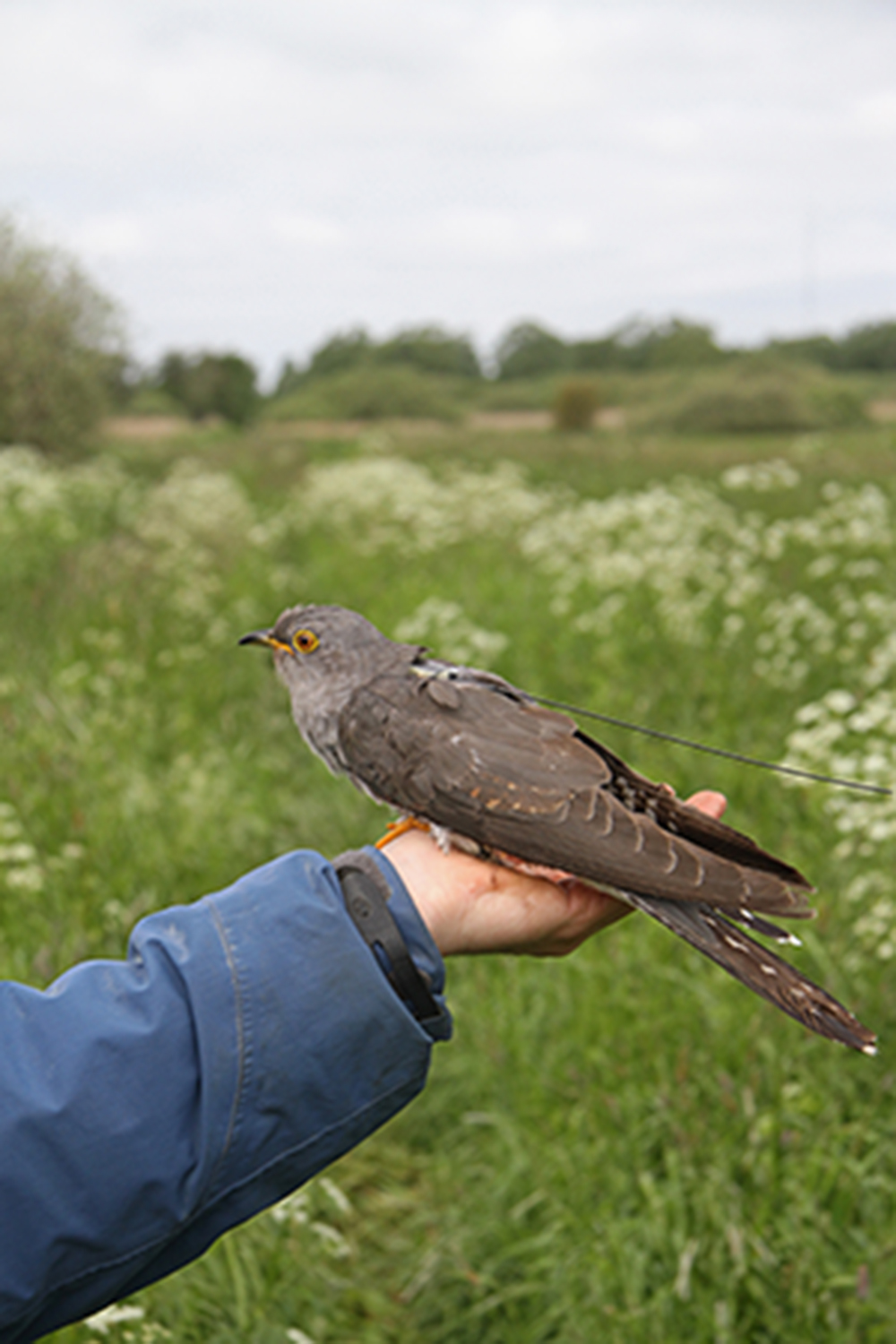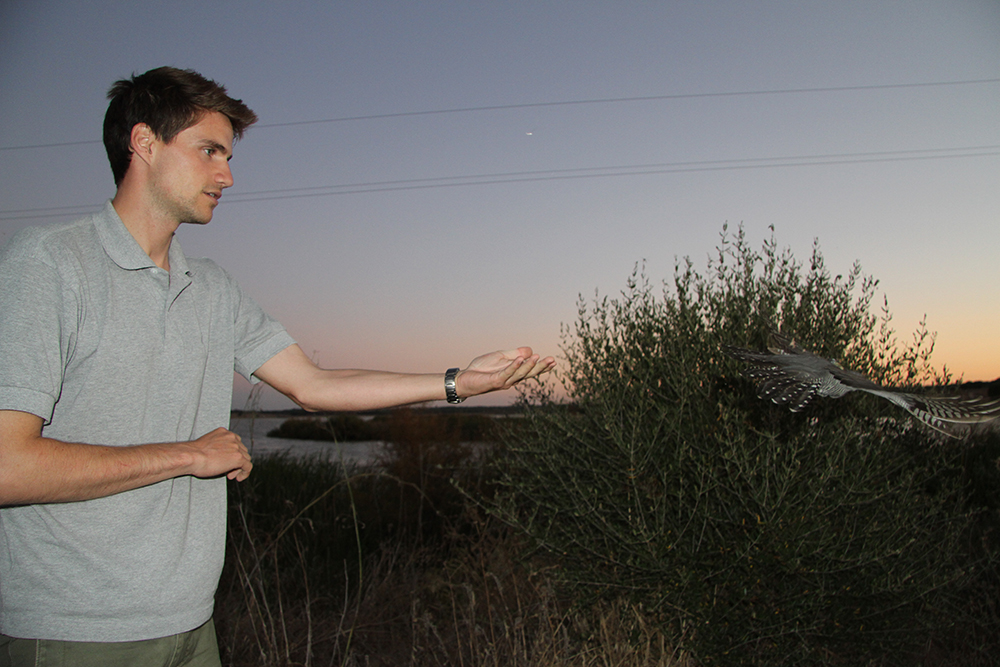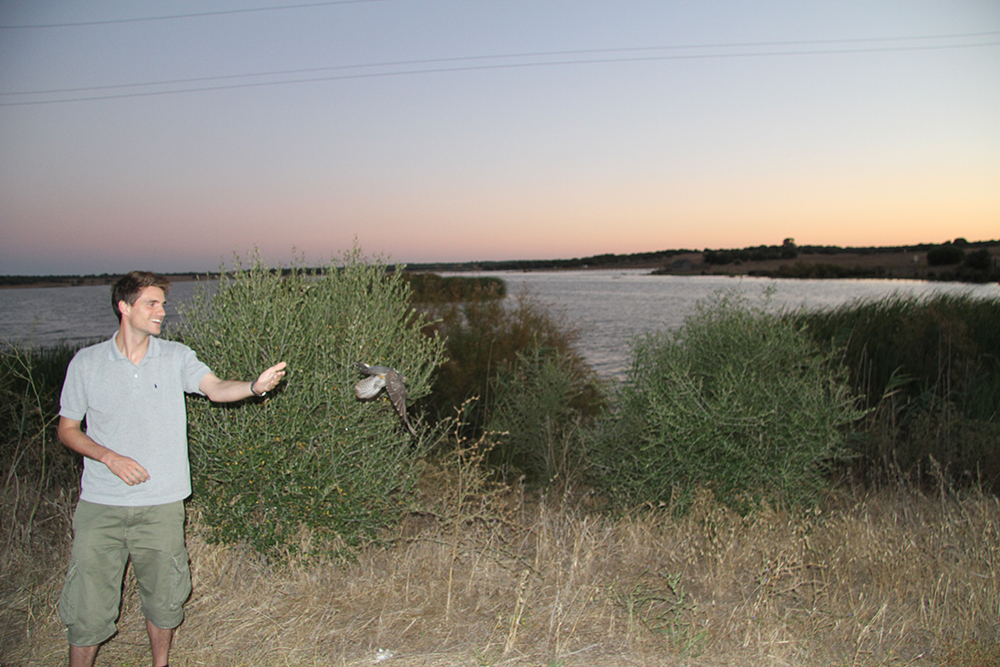What happens if you displace an adult cuckoo away from its normal migration route to an area where it has not been before? Most people with knowledge of literature would probably say that of course they will compensate for the displacement and fly back to the correct location. But what is the correct location for a bird that has been displaced not only >1000 km west of its normal route, but also advanced >2000 km south, just before it was supposed to fly south anyway?

It is well-known that experienced adult migratory birds are able to compensate for being displaced away from their normal migratory route. The experience they gained during previous migrations apparently makes them capable of navigating from an unfamiliar area back to the correct route/destination. This has been widely accepted since the displacement experiments of Perdeck and Mewaldt in the 1950s and 1960s, and many experiments since then have confirmed the pattern. But where do the birds go after displacement? Perdeck’s starlings (caught on autumn migration) migrated to the correct winter-destination, but this was after a relatively short displacement. Mewaldt’s white-crowned sparrows (caught on winter site) was not seen on the winter site until the next winter, and one spring recovery suggests that this bird moved directly from the displacement location to the breeding area rather than going back to the correct winter destination. Most of the later experiments have either been of birds displaced during breeding, or of studies using only post-displacement migratory direction to infer compensatory behavior. This does not tell us where the birds would go after displacement, nor if they would actually make it there or which route they would use. It has therefore been a common believe that tracking the bids during the actual navigation process would enhance our understanding of navigation in migratory birds substantially.
From our previous results of tracking the migration of adult cuckoos from Denmark, we knew that they normally have stopovers in Poland and/or the Balkan region and in southern Chad after crossing the Sahara before reaching the Central African main winter area about 4 months after leaving Denmark. Since the birds stop over in these areas for longer than what would be expected for simple refueling, the areas might be important for the birds and hence be targets during navigation. We therefore saw several plausible reactions to the displacement:
- the birds could go back to where they were caught (Denmark)
- go to the temporally most accurate location (Poland)
- go to the nearest normal stopover location (Balkan)
- wait for the normal time to go south, and then head for the first stopover south of the displacement location (Chad)
- don’t make any detours, but just go to the final winter destination (Central Africa)
 So when we managed to displace five and seven common cuckoos with satellite transmitters to southern Spain in 2011 and 2013 respectively, it was with great anticipation of what the birds would do. Two of the transmitters were reused and likely failed, and another four stopped transmitting within a month for unknown reasons. The remaining 6 all made it back to the normal route, but in surprisingly different ways. One actually flew the big detour to Poland before following the normal route, one flew first northeast and then pure east towards what seems to be the Balkan region and terminated, one flew south followed by strong eastern movements taking it to Southern Chad and the remaining three all flew straight south followed by slow movement to the Central African winter destination. Except for flying back to Denmark, this was all the different results we had imagined. This kind of flexibility was highly surprising to us and means that it is apparently an individual decision how to respond to a displacement.
So when we managed to displace five and seven common cuckoos with satellite transmitters to southern Spain in 2011 and 2013 respectively, it was with great anticipation of what the birds would do. Two of the transmitters were reused and likely failed, and another four stopped transmitting within a month for unknown reasons. The remaining 6 all made it back to the normal route, but in surprisingly different ways. One actually flew the big detour to Poland before following the normal route, one flew first northeast and then pure east towards what seems to be the Balkan region and terminated, one flew south followed by strong eastern movements taking it to Southern Chad and the remaining three all flew straight south followed by slow movement to the Central African winter destination. Except for flying back to Denmark, this was all the different results we had imagined. This kind of flexibility was highly surprising to us and means that it is apparently an individual decision how to respond to a displacement.
 We can only speculate about what caused this difference between individuals, but most likely candidates are probably differences in physiological condition or differences in experience. It is interesting to note that the bird that flew to Poland, in the following year showed much higher site faithfulness than what we normally see with the cuckoos. Perhaps this is a very old bird that has optimized its migration route through many years and is now very faithful to it. Another interesting observation was that all birds (11 individuals) initially moved in directions between east and northeast. It seemed like their immediate reaction was to fly in the opposite direction of the displacement, but then they stopped after 100-200 km paused and then continued in very different ways. Had we therefore only looked at migration directions and not full tracks, we would probably have concluded that they were all aiming for the first part of the normal migration route. Instead we found them capable of navigating very accurately across vast distances of unfamiliar ground with a highly individual flexibility in choice of solution. The capabilities of migrating birds are indeed amazing and fascinating beyond imagination.
We can only speculate about what caused this difference between individuals, but most likely candidates are probably differences in physiological condition or differences in experience. It is interesting to note that the bird that flew to Poland, in the following year showed much higher site faithfulness than what we normally see with the cuckoos. Perhaps this is a very old bird that has optimized its migration route through many years and is now very faithful to it. Another interesting observation was that all birds (11 individuals) initially moved in directions between east and northeast. It seemed like their immediate reaction was to fly in the opposite direction of the displacement, but then they stopped after 100-200 km paused and then continued in very different ways. Had we therefore only looked at migration directions and not full tracks, we would probably have concluded that they were all aiming for the first part of the normal migration route. Instead we found them capable of navigating very accurately across vast distances of unfamiliar ground with a highly individual flexibility in choice of solution. The capabilities of migrating birds are indeed amazing and fascinating beyond imagination.
-- Mikkel Willemoes
Video showing the routes of the displaced cuckoos compared to their normal route
Read the paper in Nature's Scientific Reports
